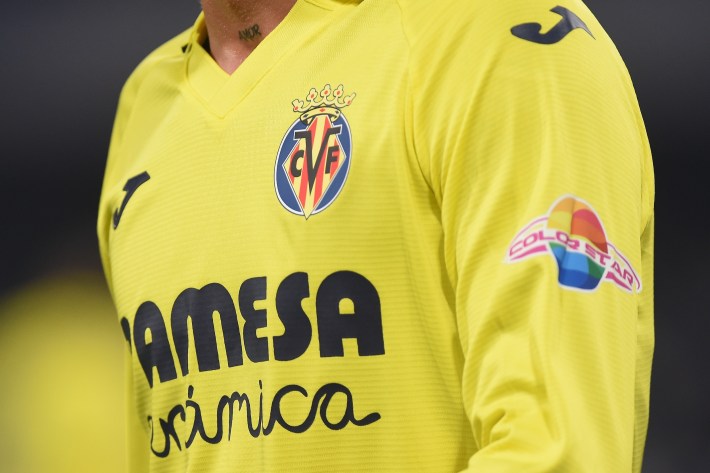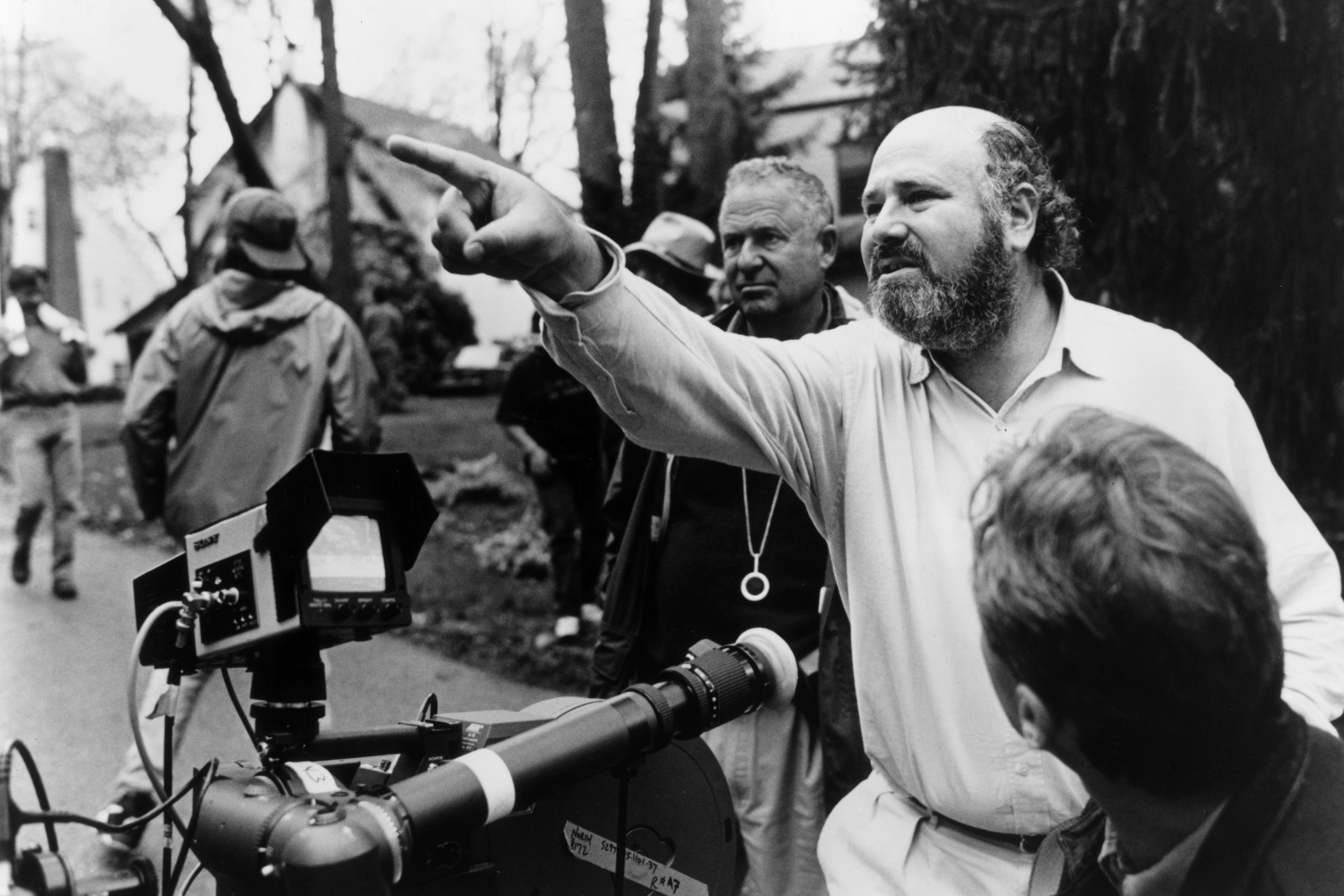The story starts with a signing ceremony. On Dec. 20, 2021, the Philadelphia 76ers staged a publicity event to announce a new marketing partnership with the Chinese company Color Star Technology Co., Ltd. This was an unglamorous affair—a team backdrop, some placards, dreary fluorescent lighting—but it was certainly given more ceremony and publicity than the typical mid-tier sponsorship deal. The 76ers published a brief video of the event to their website, and a couple of photos on Twitter. Then-team president Chris Heck emphasized the cross-cultural significance of the deal; the contract between the two parties reflected the visibility boost flowing from the very popular American basketball team to the unheard-of new international sponsor.
The partnership was supposed to last for most of three NBA seasons. It was aborted after less than one month, with the 76ers alleging a breach of contract but declining to elaborate, and sweeping the whole mess into an unattributed statement made to a local reporter on a Friday afternoon.
The 76ers had good reasons for wanting the hell out of the Color Star deal, which had already become a public embarrassment. In the days following the December signing ceremony, bored internet sleuths and obsessive self-employed bloggers had completed enough of the due diligence evidently shirked by the 76ers to learn that Color Star made for a very suspicious corporate partner.
The CEO identified in Color Star's own press releases was a shady character with a preposterous name, a video game–generated LinkedIn avatar, and a semi-fictionalized résumé. Despite now describing itself as an app developer at the vanguard of Web3 technology, Color Star had spent most of its history in the ready-mix concrete business, and had initiated its pivot to metaverse development—putting it in direct competition with Meta, one of the largest companies by market cap on the planet—just months before engaging the 76ers. It had two amateurish and largely non-functioning websites. It advertised a business address ripped from a web developer template. Its corporate email was a Gmail account. Importantly, Color Star had no product to sell to the public. Its lone spokesperson, an investor relations professional contracted from a New York-based corporate PR firm, knew next to nothing about his employers, the condition of Color Star's projects in development, or even the physical location of its headquarters.
Color Star’s moment of infamy came and went. Anyone who still thinks about the world's strangest concrete-turned-metaverse company probably does so in the past tense. But Color Star is still out there, still distributing publicly traded shares of its stock, maneuvering, propping up an all-valuable Nasdaq listing, and pushing out a regular flow of uncanny and often unbelievable press releases.
I have spent embarrassingly large parts of the past three years monitoring and investigating Color Star, watching closely as it continued to cycle through CEOs and increasingly deranged Potemkin business ventures. Each new development in Color Star’s saga, and each new piece of information I picked up about its origins, drew another line under the questions that have been plaguing me ever since I first encountered this company and its now-former CEO, Sir Lucas Capetian. What exactly is this operation? What is it trying to accomplish? Who made it this way?
I am still not entirely sure if I have satisfying answers to those questions, but I think I know enough to tell a story, one that’s not just about a strange, inscrutable company that briefly managed to bamboozle the 76ers. It’s a story about a small, dingy sector of the world economic machine, where the gears are not turned by anything so tangible as commerce, but a shambolic, deathless spirit. Nothing gets made here, and nothing, not even a company with no purpose or product, ever dies.

Why would a Cayman Islands–registered metaverse company use a proxy to establish first an Ohio subsidiary and then a boutique record label, and then have the record label strike up a concert deal with a different subsidiary, located on an entirely different continent?
Color Star is difficult to explain, as a company and a phenomenon, in part because of the pace and sheer volume of its corporate maneuvering. The collapse of the 76ers deal marked a rare and specific occasion in which Color Star’s business practices received some meaningful scrutiny and attention, but it is just one instance plucked from Color Star’s ongoing history of business hijinks. This company has had nine CEOs in the past six years, and churns out a steady stream of press releases announcing confounding shifts in its business model.
In May of 2023, Color Star announced in an SEC filing that it had reached a "Concert Cooperation Agreement"—essentially a collaboration agreement—with Ohio-registered boutique record label Rich America Inc. According to the deal, Rich America's roster of recording artists would be contracted to perform at nine concerts, all organized by Color Star, to be scheduled over a 10-month period concluding in March 2024. Color Star would be responsible for logistics and promotion; Rich America would be responsible for providing the talent. The agreement was filed to the SEC by Color Star CEO Louis Luo, who is at least the sixth person to have held this post since December of 2021.
As with many of Color Star's deals in the years since the nixed 76ers partnership, the details are where things start to look deeply uncanny. The cooperation agreement, it turns out, was reached not directly between Rich America and Color Star Technology Co. Ltd., the Cayman Islands-registered flooring-turned-metaverse company, but between Rich America and the Color Star subsidiary company Color Star DMCC, which is identified in other Color Star filings as registered in the United Arab Emirates for the purpose of expanding Color Star's business into Dubai.
This inevitably raises the question of how Color Star DMCC CEO Qi Ao, an agreement signatory, had on his radar a Cleveland-based boutique record label that does not appear ever to have had a website. But is Rich America Inc. actually Cleveland-based? The address of the company, provided in the agreement filed with the SEC, is that of a suite in an office building called Lakeside Place, in Cleveland's Warehouse District. A representative of CBRE, the commercial real estate firm that manages Lakeside Place, confirmed to Defector that the specified suite, described on the CBRE website as a "smaller space with access off the building lobby," is vacant, and in fact has been vacant for years. It and another currently vacant suite were formerly the home of the non-profit Cuyahoga Land Bank; the realtor described it as "a little bit out of date" and "in need of a refresh." CBRE has had a hard time finding a new tenant for these suites, in a large building that is otherwise all filled up. The address listed in SEC documents does not house Rich America.
This is not the only instance of Rich America borrowing someone else’s street address without that entity’s knowledge. When Rich America was registered as a business with the Ohio Secretary of State, in 2022—eight months before it struck up a lucrative concert deal with a company halfway around the planet—whoever filed the paperwork listed a hired statutory agent as its point of contact. The statutory agent and Rich America’s mailing address, according to the articles of incorporation, were provided by InCorp Services, a Nevada-based national corporate compliance services firm. Among the services offered by InCorp are the furnishing of statutory agents and business addresses, essentially a P.O. box that comes with an assigned individual whose role is to sign for certified mail, or to receive, for example, lawsuits. But Rich America never hired the statutory agent or bought the address: A representative from InCorp Services told Defector that their firm shows no record of any contract with a company called Rich America. The InCorp Services representative noted that it is not especially uncommon for fledgling companies to borrow an InCorp address without actually paying for the privilege, simply for the purpose of completing the necessary paperwork.
Rich America's articles of incorporation were filed by a person using the handle Tony Scott. A phone representative from the office of the Ohio Secretary of State told Defector that they "are not an enforcement agency" and that they do not require any verification of identification to file articles for a domestic for-profit corporation. The Ohio Department of Taxation would theoretically store more substantial information about Rich America Inc., but that information is presently locked behind a byzantine bureaucracy that appears to have been entirely turned over to shoddy automation.
Meanwhile, Tony Scott is not the name signed on the Color Star agreement paperwork as CEO of Rich America. That person is identified as Antony Kimemia Kuria. The world is more full of Antony Kurias than you might expect. One of them is listed at a residential address in the Greater Hilltop neighborhood of Columbus—Rich America is, after all, an Ohio company—in a ranch-style bungalow that does not at first glance give the impression of housing the CEO of an internationally famous record label. A middle-aged woman who answered the door at this address confirmed that Antony Kuria is her husband, but this Mr. Kuria has so far declined to contact Defector. It’s probably not the right guy: Voter registration information says that this person is Antony James Kuria. There is an Anthony Kimemia Kuria who maintains a LinkedIn account: This person, a warehouse worker in Mombasa County, Kenya, is also probably not the CEO of Rich America.
Incorporating a record label that would go on to strike an agreement with Color Star’s Dubai subsidiary wasn't the first time that "Tony Scott" had done business with the Cayman Islands-registered parent company. In August 2022, about one month before the registration of Rich America, "Tony Scott" filed articles of incorporation in Ohio for another business: Color Star Technology Ohio Inc. This entity makes a subsequent appearance in Color Star's 2023 annual report as a wholly owned subsidiary, albeit one that had not yet commenced operations. The articles of incorporation for Color Star Technology Ohio Inc. also borrow the InCorp Services address, but this time, for his personal address, "Tony Scott" lists a retail building on Wall Street in Manhattan's Financial District. The suite listed on the document is currently also used as the address of a kitchen and bathroom hardware wholesaler.
We haven't even addressed Rich America's artists, who were evidently impressive enough for Color Star DMCC to commit the equivalent of $8 million in company stock as payment for their participation in an international concert series. Rich America, which otherwise has zero internet presence, once maintained a Twitter account and identified a stable of six artists: Clark Airlines, Chris James, Juno Lost Kause, Sly Polaroid, Olivia Reyes, and Elo Green. Defector reached out to several of these artists via email and social media direct messaging, and to affiliated artists, but to no avail. Since Rich America has not updated its Twitter account since 2015—curiously, seven entire years before the company was registered for business in Ohio and eight years before it scored its concert deal—it's possible that the performers highlighted by the account are no longer affiliated with the label.
Importantly, there is no record in Color Star's filings, in its press releases, or on its website of the company ever successfully promoting or bringing off any of the nine Rich America concerts. Color Star did promote one concert in 2023, a Ne-Yo–headlined affair in Thailand, but then canceled it just four days before its scheduled date. The pop-up ad promoting tickets to this aborted Ne-Yo concert continued to run on the Color Star website for two months after that same website announced the cancellation. Ads for the concert are still visible on the site's homepage today.
Zooming out from the details, it appears that someone working on behalf of Color Star filed an Ohio registration in 2022 for a new Color Star subsidiary, then went back to the Ohio Secretary of State again the next month to register another nominally independent business, using the name from a probably defunct Midwest boutique record label that had otherwise long abandoned its online presence. Then, a few months later, they worked out a transaction for selling the "services" of the latter to a different subsidiary of the parent company of the former, in exchange for cash and shares of the parent company's stock. All it took was a generic name and some borrowed addresses, not even all that carefully chosen.
What was the purpose of any of this? Why would a Cayman Islands–registered metaverse company use a proxy to establish first an Ohio subsidiary and then a boutique record label, and then have the record label strike up a concert deal with a different subsidiary, located on an entirely different continent? One possible explanation is suggested by the movement of Color Star’s stock, which was trading at $1.13 per share on the date of the signing of the concert deal, and which gained and lost a few pennies in value over the subsequent few weeks. Inking a concert deal with an obscure record label might not vaunt a Chinese metaverse company into the Nvidia-sphere, but a minor wobble in trading value during an otherwise uneventful stretch of business could be well worth the effort to prepare and file some easy paperwork.
It's more common than you may think for a stock representing no real, legitimate business to exist and be traded among the public. Down among the penny stocks, there is a cockroach-like, infinitely replenishing supply of fake companies announcing pivots to whatever is hot and new. The business model is to identify the ascendant trend—decriminalized marijuana, NFTs, COVID research, artificial intelligence, etc.—then do the bare minimum to convince gullible types that you are navigating a triumphant move into it, and score a pennies-per-share increase in stock value, without ever actually producing anything.
A significant number of these companies are foreign private issuers. Foreign private issuers aren't subject to all the rules and regulations faced by domestic companies; the regulatory goal is to "recognize international and home jurisdiction standards" while providing some level of protection for U.S. investors. The current system makes it comparatively easy for a foreign private issuer to be illegitimate, which is why lots and lots of dubious micro-cap companies like to register in, say, the Cayman Islands. The U.S. Securities and Exchange Commission is responsible for regulating this mess, but it’s possible or even inevitable that some number of bullcrap companies will slip through the netting, and keep slipping.
In its post-concrete era, Color Star continues to announce new partnerships and mergers with individuals and companies that appear to be significantly less real than the Philadelphia 76ers. Most of these announcements are made via press releases, which are reliably distributed by automated junk sites like PR Newswire and Yahoo Finance. This behavior by Color Star—putting things in press releases that almost never seem to quite sync up with events in the real world—is the kind of thing that a layperson might expect to draw the attention of an informed investor base, or a motivated stock exchange, or a well-resourced regulatory body. Indeed, the Justice Department has come down hard in the past on bad actors for "distributing false press releases, announcing non-existent business ventures and fake mergers, [and] posting false information on social media sites," as it did in a 2013 indictment of six individuals for executing a $120 million international penny-stock pump-and-dump scheme.
Sometimes, these unexplained rises and dips in the stock price can arrive without the encouragement of any dubious press releases. In August of 2024, after having received one of many warnings from Nasdaq that its stock was in danger of being delisted, Color Star notified its investors that it would hold a proxy vote at its annual meeting in Beijing, scheduled for Sept. 29. The vote would be to approve a reverse share split—a consolidation of outstanding shares—that would artificially multiply Color Star's stock price, and get the company out of trouble with Nasdaq.
Delisting was averted eventually by a 100-to-1 reverse share split, executed in November, but first by a sudden leap in the trading price of Color Star stock. Over the course of three days of trading starting on Sept. 10, and disconnected from any news or convincing developments to Color Star's business, shares of Color Star stock nearly doubled in price, from 65 cents to $1.21, and then held strong for 13 days. It was another suspiciously well-timed spike for an otherwise dead stock in what had been a volatile year, the kind of thing that had one Wall Street–watcher blog using the phrase "pump-and-dump" to warn away potential Color Star investors. This shift in fortunes lasted just long enough for Nasdaq to fire off another letter, officially announcing that Color Star had regained compliance with the minimum listing criteria. Color Star announced its triumph with a press release on Oct. 1. That same day, Color Star stock lost about 10 percent of its value; by close of business on Oct. 3, shares of Color Star were trading at 45 cents; by dinnertime on Oct. 4, you could buy a share of Color Star for just over a quarter.
That doesn't mean any of this is securities fraud, but the way U.S. securities laws are working nowadays, a thing only isn't securities fraud until it is. The SEC told Defector in September that it is in possession of 5.3 gigabytes of electronic data potentially relevant to a request we filed for investigative material related to Color Star, covering a period of time stretching back to the company's first public filings in 2018. The SEC representative assigned to the request described this as "equivalent to approximately 42.5 boxes of physical records," a volume of records that would require up to 36 months of processing before release. The SEC representative declined to say whether this was a "normal" volume of records for a company of Color Star's size, but clearly it is enough to know that Color Star is not entirely evading the attention of regulators.

With its core business drying up, the conditions for recovery in mainland China turning increasingly unfavorable, and few avenues for getting ahold of working capital, Color Star found itself sinking into deep shit.
The Color Star we encounter today can be imagined as a reanimated corpse. It serves no clear purpose, but its creators continue to imbue it with unnatural life, likely for the sake of maintaining a Nasdaq listing. The body Color Star currently calls home was, however, once alive.
Long before there was a Color Star Technology Co. Ltd., the confounding Dubai-based international metaverse mess, there was TJS Wood Flooring, which after a couple of years in the unincorporated wilderness registered in 2007 in Delaware. TJS Flooring used a registered agent to file its first annual franchise tax report, and listed as president on that document a resident of Temecula, Calif. The company had two directors, including its president, whose names suggest that they were either siblings or a married couple. In any case, they weren't around for long: By the time the company filed its 2008 tax report, the Temecula pair had been replaced by men named Xianfu Han and Xiangsheng Xu, of Haidian District in Beijing. The company, renamed China Advanced Construction Materials Group, Inc., described its business as supplying ready-mix concrete and the like for large-scale construction projects, according to annual reports filed to the SEC in subsequent years.
CACMG did not maintain a physical address in Delaware, or for that matter anywhere else in the United States. Its principal corporate offices, per quarterly reports filed to the SEC, were in Beijing. Its ready-mix plant was in Beijing, and its delivery radius, per a summary of its business history found in a company filing from February of 2020, was approximately 16 miles. The registration in Delaware was likely chosen to take advantage of the state's famously business-friendly regulations.
In 2015, the Chinese government started to reform the country's environmental laws, cracking down on polluters and instituting new industrial regulations that shifted the onus onto businesses for meeting aggressive environmental targets. By late 2017, CACMG was starting to get the idea that it could not persist very much longer in its current line of business. As the company described it in subsequent annual reports, its financial outlook turned grim "as the Beijing government continues to enforce concrete production reformation and tightened environmental laws," including the mandatory shutting down of large-scale construction projects during winter months in order to reduce the effects of air pollution.
CACMG had other urgent problems, created by the controlling officers of one of its subsidiaries, Xin Ao. These employees, Xianfu Han and Weili He, had gotten the company into trouble with certain "personal guarantees," per a company filing from late 2019, and the resulting civil suits threatened "potential judgments in the amount of $26.7 million." Compounding these troubles, per the filing, CACMG was falling into "payment and technical default" on business loans it had taken out to fund its cash-intensive concrete business. With its core business drying up, the conditions for recovery in mainland China turning increasingly unfavorable, and few avenues for getting ahold of working capital, the company found itself sinking into deep shit.
Someone with their hands on the tiller started to look around in earnest for new opportunities. In the summer of 2018, CACMG launched a wholly owned subsidiary, CACM Group NY, Inc., incorporated in the state of New York, for the expressed purpose of developing the company's business in the other hemisphere. In December of that year, CACMG completed a complicated merger maneuver to register itself in the Cayman Islands; six months later, it renamed itself Huitao Technology Co., Ltd., signaling in the rebrand that it was leaving the construction business behind. Indeed, in 2020, Huitao Technology bundled up whatever was left of its concrete operation, socked it inside one of its several China-based subsidiaries, and handed it off wholesale to Han and He in exchange for $600,000 in proceeds, per SEC filings. The new company, stamped with the name Huitao Technologies but otherwise hollow, urgently needed a business model to pursue.
Huitao's first attempt came in 2019 with the absorption of the company Sunway Kids International Education Group, Ltd. Sunway's business was early childhood education and health services. The people running Huitao reasoned that the Chinese government's introduction of a national two-child policy in 2015 would provide "a guaranteed increase in opportunity for the preschool education industry," and cited a Deloitte report from 2018 that estimated that China's private education market would balloon to approximately $714 billion by 2025.
This gambit went spectacularly poorly, in part for reasons that Huitao's executive leadership could not have anticipated. In December of 2019, the same month that Huitao Technology and Sunway Kids initiated their merger, the COVID-19 virus found homes in the bodies of residents of Wuhan, and then took over the globe. By June, Huitao's board of directors and Sunway's imported executive team had agreed that Sunway Kids would not be able to "conduct its normal operations" or "achieve its projected financial results" during a global pandemic. Huitao Technology was deep in hock: It had finally defaulted on the bank loans, it was not yet out from under the Xin Ao civil lawsuits, and it could not sit around and wait to find out if Sunway Kids would ever be able to recover its business. Huitao offloaded Sunway Kids to a sole shareholder for a return of $2.4 million, due in installments paid over a period of 10 months.
After dumping Sunway Kids and fleeing the private education sector, Huitao Technology was once again a company without a business and a restless board of directors stewarding a crashing stock while hunting around for something to sell. The company had no revenue or product, and was living very poorly on cash reserves and investor capital. It was about here, in May of 2020, that Huitao Technology got into business with an ambitious Hong Kong-based startup, formed just months earlier, called Color China.

Wu and Huang seem to have had a good grip on a grim truth of modern capitalism: You do not become rich by selling things to consumers. You become rich by selling projects to investors.
As Huitao Technology edged closer to a natural expiration, the forces that would eventually turn it into a penny-stock zombie were running their own set of plays. This side of Color Star’s formation story starts with the Chinese company Yuren Manufacturing International Cultural Media Co., Ltd., established in 2011 and registered in Beijing. Yuren was the project of a pair of Gen-X Chinese entrepreneurs: Xin Wu, from Zhejiang province, and Xiaoyan Huang, from Shandong, both now 48 years old. By 2019, Yuren had at least 10 subsidiary holding companies, many of which had names that were simple variations on the parent company's, and had amassed approximately $40 million in capital investments.
Yuren's clunky corporate name leaves you without a very clear sense of the nature of its business, but as with Color Star Technology Co., Ltd., that is perhaps not an oversight. The company's social media activity from 2019 and a selection of optimistic press releases from around that time suggest that Yuren promoted itself as an event logistics firm—concerts, to the extent that any of this is verifiable—but it's clear that Huang and Wu were thinking globally, and working at least as hard to position their company as an attractive investment as they were on throwing concerts. There's an impenetrable mixture of grand ambition and non-specificity to the way that Huang and Wu wrote about Yuren's expanding business, one that will ring familiar to anyone who has tracked Color Star Technology in the time since the disastrous 76ers deal. As much as they loved talking about Yuren, there seemed to be some discipline in the way they avoided declaring anything of substance.
"[We] have made great progress in the promotion and development of projects with many cooperative institutions in the United States," reads a translated social media post from October 2019. "At the same time, the progress of our projects in many Southeast Asian countries has also been on track and carried out in an orderly manner. There is no doubt that Yuren will end the year 2019 with the strongest brand in 'manufacturing.'"
Posts on the company's various publicity channels suggest that Huang and Wu liked traveling, networking, and being photographed. Huang in particular attired herself in such a way that she would always be easy to spot in crowds: stylish clothing, impressive platformed shoes, exaggerated eye makeup, and bright pink hair. Yuren's abandoned Facebook and Weixin pages—Weixin is a social media platform established by Chinese multinational technology behemoth Tencent—are stuffed with images of Huang and Wu traveling internationally, smiling at the center of lined-up industry fellows, seated around impressive conference tables, even smiling for photos from behind the desk at the Nasdaq MarketSite building in New York City. Huang cannot be missed.


Wu and Huang seem to have had a good grip on a grim truth of modern capitalism: You do not become rich by selling things to consumers. You become rich by selling projects to investors; the idea is to make someone's project grow beyond what would be possible on the timeline of normal transactions, expenses, or profits. If the world-shaping chaos wrought by Silicon Valley has demonstrated anything, it's that these projects don't necessarily need to be smart, profitable, or even real. Pour your own capital into the right one, or have enough of someone else's capital poured into yours, and you can become a celebrated genius and a billionaire. Wu and Huang were ostensibly running a dopey logistics operation, but there are more direct ways of raking in mountains of cash than providing something of value to consumers in exchange for money.
Huang and Wu were also dealing in securities. They and at least one other associate at Yuren Manufacturing managed Shenzhen Ju Xing Long Venture Capital Fund Management Partnership, described by Chinese regulators as a "private equity fund issuing company." As later described in Chinese court documents, over a period of at least five years Ju Xing Long successfully courted at least 264 investors and brought them into a sequence of "Cultural Investment Funds." This was a successful venture, at least by volume: At its peak, Ju Xing Long had absorbed $102 million in capital investments.
In 2019, Ju Xing Long, Xin Wu, and Xiaoyan Huang were sued by Ningbo Shengyun Venture Capital, a firm that had invested about $15 million in one of these "Cultural Investment Funds." Ningbo accused Ju Xing Long in the complaint of failing to fulfill a contract: It seems that Ju Xing Long had allegedly enticed Ningbo and other investors by issuing a "repayment plan commitment letter" that in retrospect read entirely too much like a guarantee. Ningbo was not alone in seeking a remedy in civil court: Dozens of Ju Xing Long investors sued the company.
To make matters worse, regulators began to crack down on Ju Xing Long and its "Cultural Investment Funds." The Nanshan branch of the Shenzhen Public Security Bureau declared, amid a criminal investigation into one of the partners in the scheme, that Ju Xing Long had "illegally absorbed" public deposits over a five-year period ending in June 2020, and transferred the case to the Shenzhen Nanshan District People’s Procuratorate. Meanwhile, the Shenzhen bureau of the China Securities Regulatory Commission (CSRC) opened its own investigation into the company, eventually reaching what is substantially the same conclusion about Ju Xing Long's securities operation. The fallout from all of this activity involved a string of damaging regulatory actions. The CSRC issued a public condemnation of Wu and Huang, noting the "great social harm" and "serious damage to the legitimate rights and interests of investors and the public" caused by Ju Xing Long's violations of Chinese securities laws. Meanwhile the courts moved to freeze the bank accounts and audit the illiquid asset wealth of Huang and Wu, and took measures to restrict their finances and movement, including barring Wu from leaving the country, in an effort to fulfill a $2.275 million judgment against Ju Xing Long in the Ningbo lawsuit.
This led to a surprising discovery. According to public Chinese legal documents viewed by Defector, the court was able to recover about $1,475 from an account registered in Huang's name, but otherwise could find "no bank deposits, no real estate with disposal conditions and no foreign investment" belonging to either defendant. It appears to have fallen to "the applicant"—in this case, Ningbo Venture Capital—to provide the courts with additional avenues for recovery; when Ningbo could not, the court added Huang and Wu to a "list of dishonest persons" who remained subject to forfeiture, but left it to Ningbo to apply to the high court for the resumption of execution. It was an unsatisfying conclusion, but the actions of various Chinese governmental bodies had made it if not impossible then at least impractical for Huang and Wu to continue raising investor capital on their home soil. By the midpoint of 2020, their days of moving and shaking atop Yuren Manufacturing were over.
There's reason to believe Huang and Wu had seen this coming. In late 2019 they were on the move, taking meetings outside of China and networking with Western contacts. A post to the Yuren Manufacturing Weixin account on Oct. 29 vaguely describes "multiple projects in Southeast Asia and European and American countries" and boasts that Huang and Wu were "warmly welcomed by overseas partners." A photo down the page has the duo seated with six business contacts around a small conference table, beneath a drop ceiling. It winds up being a fascinating group portrait.

The two leftmost people in the photo are Jarom Heaps and Michael Pope, names that will come to have relevance in the strange Color Star adventures to come.
What is only hinted at in this October 2019 blog post—hidden behind talk of "high-quality projects with new formats and diversification" and "a global business alliance network" that Huang and Wu regretfully could not yet describe in full—is a new enterprise the pair had recently founded. With Yuren Manufacturing under pressure from governmental investigations and disgruntled investors, Huang and Wu had quietly formed a new company in July, this time registered in Hong Kong, and had named it Color China Entertainment Limited.
Color China Entertainment Limited would be absorbed into Huitao Technologies in May of 2020. Somebody sold the hell out of this deal: In later correspondence with the SEC, then-Color Star CEO Sean Liu explained that at the time of the merger, Color China had "no historical financial information" and "no historical operations." The only thing of tangible value offered by Color China was "a significant collection of music performance specific equipment." That plus the experience, pluck, and ingenuity of Color China's founders was evidently worth 4.6 million shares of Huitao stock, plus a cash payment of $2 million.
The Share Exchange Agreement filed to the SEC on May 11 was signed by Liu and Color China CEO Muze Wu. That same week, Huitao Technology registered a name change and became Color Star Technology Co., Ltd.
Internal company messages from that August, viewed by Defector, show Huang taking the lead in the informal orientation of a new Color Star executive group. She describes herself as "VP responsible for connecting with celebrity resources in Asia." She describes Muze Wu, who signed the merger agreement as Color China's CEO, as "behind the scenes boss." She describes a man named David F. W. Fang as "VP in charge of finance." She introduces Pope as "Director," and Heaps as "COO."
These are the people who first gave Color Star the gift of unnatural life, but they would not be the last.

Menelly last communicated with Defector on Christmas Day of 2021, soon after we published our first Color Star story, to express unhappiness with our reporting but bearing the heartening reminder that Jesus Christ offers "redemption even for people like you."
Executive turnover is an ongoing challenge at Color Star. The company has now had nine CEOs in six years. The current CEO, Haixiang "Louis" Luo, has held the job for about 23 months. The last CEO to hold the job that long was Xianfu Han himself, the final chief executive of the company's concrete era. Han took the concrete operation with him when he left what was then called China Advanced Construction Materials Group in March 2019.
Han was replaced by Yang "Sean" Liu, who made his mark atop the company by engineering its move to the Cayman Islands and the subsequent rebrandings. Liu's résumé said he'd worked for most of the prior decade at the North American financial software company Murex, but had also spent some time at an oddly diversified company called Wave Sync Corp, which both rents industrial properties and dabbles in cryptocurrency. It speaks both to the resiliency of Huitao's stock price in 2019 and the deterioration of its cash position that Liu was compensated, as CEO, entirely in shares at a rate of 120,000 shares per year. Liu stepped down from the job after about 15 months, soon after he completed the absorption of Color China in the summer of 2020. Liu accepted a smaller job within Color Star as vice president of technology.
Next in line was Biao "Luke" Lu. A Color Star source identified Lu in a photograph posted to Yuren's Weixin account in late 2019, which would seem to suggest that he was an associate of Huang and Wu, and was installed as part of the Color China merger. Color Star touted in filings Lu's success as a screenwriter and producer in Chinese cinema, and his useful contacts in the industry. Under Lu, Color Star started to describe itself as a kind of MasterClass program, offering celebrity-led education courses but exclusively within the music industry. Lu accepted the CEO job with a salary of $72,000, plus an annual disbursement of 300,000 shares of Color Star's sagging stock.
This was a confusing chapter for the company. Filings in August of 2020 show Color Star working to stand up a live concert logistics operation, including raising capital via a share disbursement to fund a $3 million cash purchase of "machinery and equipment for stage performance" from a private seller. In a company registration statement from that July, Color Star mentions for the first time the development of a Color World project, which it describes as a service that "can provide professional entertainment and music education globally," through "the Internet." The word "metaverse" does not appear in the description of this initiative. Importantly, Color Star describes the project as the primary work of its Color China subsidiary. Color World was supposed to be primarily a subscription product, but Color Star hoped to generate some additional revenue from peripherals:
The “Color World” platform will generate revenue primarily through paid membership subscriptions to our online courses. The Company also plans to generate revenue through the sales of relevant products, including but not limited to peripheral products of entertainment stars and trendy brands. Over time, we may develop more sources of revenues. Our freemium model allows us to attract users with free services and convert them into paying users. On our “Color World” platform, individual users can access a number of our courses and services for free. We convert non-paying users to paying users through a variety of means. For example, we will provide free trial periods to our users to allow them try premium contents that can usually be accessed exclusively by paid subscribers, free credits to users for trying premium courses, prompts with personalized suggestions on how users can improve their skills with links to our paid courses, and discounts on peripheral products for paid subscribers.
Color Star registration statement, July 24, 2020
Over the course of the nine months following the machinery purchase, four members of the company's seven-person board of directors resigned and were replaced. The last burst of this turnover came in May of 2021; two weeks later, Color Star announced that it had hired Basil Wilson, a co-CEO to share responsibilities with Biao Lu. Wilson came with experience in "technical development of entertainment technology, including the production of 3D virtual human concert, Al scene technology development, and AR entertainment artificial intelligence development, etc.," per the related Color Star filing. A month later, Lu stepped down and took the role of Chief Artistic Officer, and Wilson became Color Star's lone chief executive.
Wilson's background was never very clear, even to Color Star's own short-lived public relations executive. Douglas Menelly, who served very briefly as Color Star's director of communications, told Defector in those heady hours following the 76ers ceremony that Wilson's professional experience was with "the different LED screens,” “different lasers,” and “all the different visual effects that go around and support someone like Lady Gaga" during a live performance. There was so much about Color Star that seemed to confuse and befuddle Menelly, including the credentials of its leadership, the conditions of its products and websites, and the location of its operations hub. Menelly last communicated with Defector on Christmas Day of 2021, soon after we published our first Color Star story, to express unhappiness with our reporting but bearing the heartening reminder that Jesus Christ offers "redemption even for people like you." By January, Menelly and his investor relations firm had severed their business ties with Color Star.
Wilson was already out of the Color Star CEO job before the consummation of the 76ers deal, having exited the company "due to health reasons" on Dec. 13, 2021. Wilson was an active executive during his six-month run on the job, and remained an energetic if elusive Color Star representative in the days following his formal departure. Under Wilson's stewardship, the word "app" first appeared in relation to the Color World project, and the company did launch an app in the buildup to the 76ers ceremony. Color World was not at all a platform: The app, in its first iteration, contained one autoplay video, 86 seconds in length, advertising itself. The video featured a dizzying mashup of stock imagery, borrowed video-game clips, and grainy quick-cut footage of famous people saying the words "color" and "colorful." The narration didn't use the word "metaverse," but it made clear that the project was heading in queasy Web3 directions, describing Color World's combination of "the concepts of parallel universe entertainment project and NFT."
Wilson was present, if placardless, at the 76ers signing ceremony. By then, yet another person was running the show: A 76ers spokesperson who spoke to Defector after the signing ceremony said that they were at least sure that the person who replaced Wilson atop Color Star "does exist," although they were under the misapprehension that this person was "based in Europe."

That new CEO was identified in Color Star filings and press releases as Sir Lucas Capetian. Capetian took the job the same day Wilson abandoned it, just six days before the announcement of the 76ers partnership, evidently leaving him without enough time to book travel to Philadelphia. In the press release announcing his hiring, Capetian is the first person to use the word "metaverse" to describe the Color World project, citing the "tremendous efforts in the development of metaverse and NFT products" under the leadership of his predecessor. The release was a mess: Capetian boasted of more than a million "registered users of the metaverse entertainment platform," which at that moment was still nothing more than the 86-second promo video. One paragraph later, the release noted that "the Color Star app metaverse entertainment interface will be launched later this month."
Capetian's résumé, as presented on his LinkedIn profile and in official company filings, was at least partially fabricated, listing an executive MBA from Harvard Business School, which does not offer an executive MBA program. It also listed a pair of certificates from the World Health Organization, but the links printed on both certificates led to a verification page that said they had been issued to pink-haired, jet-setting Color China founder and alleged financial criminal Xiaoyan Huang. Menelly was flummoxed when Defector brought these issues to his attention, describing it as frustrating and "hard for me to explain if we have a shareholder that googles the new CEO’s name" and encounters this confusion of information.
Capetian soon cleaned up his LinkedIn profile, replacing the video game avatar with profile photos showing a handsome young man, first in an office chair against a bland background and then in a tuxedo. Menelly told Defector that Capetian lived and worked in Dubai, and had been involved previously in developing internet technology for e-commerce sites. He was hired to take over at Color Star, according to Menelly, because this experience qualified him to lead the development of a digital metaverse to rival the one then being built by Meta.
Capetian had a very weird and eventful six months on the job. It fell to him to deliver something metaverse-like to the Color World app, and to be the face of Color Star in its brief peak of international visibility. No one at Color Star appears to have been ready for the moment. Capetian and a proxy named Michael Leung made one or two awkward appearances at dismal YouTube events for hacky industry types, and Capetian continued to churn out uncanny and occasionally alarming press releases. Meanwhile, the Color World app cycled through new iterations, each more bizarre and troubling than the last.
In January of 2022, the 86-second promo video was replaced by a strange 11-minute autoplay video biography of retired Spanish soccer player David Villa, whose face had previously been splashed in bom format on Color Star's broken websites.
Days later, that video was replaced by a short looping graphic of the Color Star logo and Nasdaq ticker symbol, promising a release date of Jan. 25. When that date sailed by with no metaverse, Color Star replaced the looping graphic with a note to users apologizing for "the delay in launch time." By this time, the 76ers had parachuted out of the partnership and stripped Color Star's logos from their arena, and Capetian had emerged from his coding cave to fire off a letter to Defector, accusing us of racial discrimination in our coverage of his company, and threatening to take us to court.
Color Star did eventually plug something interactive into Color World. On the morning of Feb. 7, 2022, Color Star launched a second app, Colorworld_Metaverse, that featured a login page and a limited character selector, and an unpleasant urban-themed digital sandbox for your crappy pixelated character to explore. It was not anything anyone would consider a "metaverse." Where Capetian had promised customizable avatars, the live app offered five preloaded characters, whose distinguishing features could be summed up as Tough Guy, Top Hat Guy, Generic Guy, Lara Croft, and Conspicuous Breasts.

The user experience, tested after launch by Defector, was glitchy, and the digital environment was small, empty, and horrendous. Capetian announced updates to the bare-bones app over the following weeks, but they were on the order of adding what looked like a gas station rendered with the graphic precision of the 1985 “Money For Nothing” music video and calling it a shopping mall, and forging an in-metaverse marketing partnership with a French watchmaker whose watches were described as "crafting a brand-new definition to the concept of time."
The Color World "metaverse" app didn't survive long, at least on the major Western app markets. Today it is unavailable on the Apple and Android mobile operating systems. Color Star has ignored numerous queries from Defector about the app's present condition and future prospects. By the end of June 2022, Capetian was gone from Color Star, replaced by a pair of interim co-CEOs, one of whom was former Color Star CEO Biao Lu. Within two months, they were replaced by a man named Farhan Qadir, whose vague résumé claimed that he had established "several entertainment and fashion companies in Dubai."
Under Qadir, Color Star executed a 40-to-1 reverse share split in September of 2022 to successfully bolt out from under a Nasdaq non-compliance warning, and announced a deal to spend $2.8 million in cash and another $2.2 million in stock to purchase 10,000 smartphones from the Dubai company Ziaul Haq General Trading Co., which it planned to brand with the Color Star logo. In a November filing, the company warned that this was a big swing. "Since selling smart phones is a new business segment," read the filing, "we cannot guarantee you that we could achieve our investment goal and recover all expenses and costs we incurred to launch and operate this business segment."
Qadir was gone from the company by mid-February of 2023, replaced by current CEO Louis Luo. Color Star's maneuvers under Luo have gotten smaller and somewhat more tragic: In August of 2023, Color Star sponsored a WBA fight card in Dubai, and the next month it threw its name on a fan meet-and-greet for a Thai pop duo, held in a hotel lobby in Manila. The news feed on the sole surviving Color Star website hasn't been updated since (and the company's website is currently dead).
The last Color Star press release, issued on Sept. 4, 2024, announced the hiring of a new vice president, a "distinguished finance and strategy expert" named Ren Pelosi. The press release said that Pelosi has a bachelor's degree from St. Cloud University, but a representative of the St. Cloud University admissions department told Defector that no one by that name is listed among their alumni. The press release also said that Pelosi has a master’s degree in Cognitive Science from Columbia University, and was formerly a trader at a firm called World Trade Securities. The World Trade Securities website has that signature shabbiness common to virtually all companies and partners listed in Color Star press releases. Below is a video featuring the CEO of World Trade Securities, a man named Nicholas Mugalli:
By midday on Oct. 18, 2024, Color Star stock was trading at 18 cents per share.
All of these CEOs have been tasked with shocking enough unnatural life into Color Star to maintain its Nasdaq listing, but they are not the only ones who have participated in perpetuating its undeath. There remains a question about how this company has repeatedly shambled out into the real world, the one that respectable organizations like the Philadelphia 76ers call home, and found partners willing to shake its rotting hand.

That the company was so obviously a radioactive flea circus helps to explain why the more careful parties from among those who ushered Color Star westward sprinted away from the scene before the ink on the agreement had time to dry.
Juan Antón has a pretty big job. As commercial director of the Spanish soccer club Villarreal CF, Antón and his team find sponsors who pay to affix their logos wherever space is available, including in spots around the team's stadium, and on the team's jerseys and pants. "There's a limited number of spots on the jerseys" of the world's top clubs, explained Antón, so as long as Villarreal can be counted among that group, Antón can charge a premium for the real estate. As he describes it, he is waging his own underdog campaign against the giants of European soccer, and bearing up in that competition about as well as he could hope.
To build out a network of contacts and potential business partners, Antón prefers to work with boutique brokers. The larger agencies "are great," Antón said, "but unless I pay a really high retainer fee, they're not going to move a finger." The big brokers certainly can understand Villarreal's specific interests and boundaries, but they are less likely to be accommodating, and the larger brands they represent tend not to give a damn about whatever value Villarreal places on maintaining its reputation. Antón gave a recent example: An agent contacted him with an otherwise appealing offer from "a huge multinational that's up and coming," but the deal would have required that he break an existing contract with a family-operated Spanish company. To Antón, this would have failed both on moral and financial grounds: The network itself has tangible long-term importance to the club, and behaving like a bull in that particular curio shop would not make business sense for a modest short-term increase in revenue.
However romantically Antón waxes about the value of his network, it is far from infallible. Occasionally, it will burp up something unpleasant. In 2022, Antón's network got Villarreal into business with Color Star, in an arrangement that had the company's delightful Saturn-shaped logo stamped on the left shoulders of Villarreal's jerseys.

Color Star's website's news feed from this sponsorship period is like the Facebook page of a proud but overbearing parent, with posts about a Villarreal four-game win streak, a victory over Real Madrid, and a youth camp run by the team. Color Star used awkward Villarreal photos on posts that weren't even about the team, including one about the company launching yet another subsidiary, this one in Singapore. The youth camp photos are notable for splashing Color Star's logo on the chests of a bunch of New York children, a bump up in sartorial prominence that the company could afford only on kids' T-shirts. This sponsorship arrangement led to other surreal images, like veteran Spanish defender Raúl Albiol posing for a photograph with Sir Lucas Capetian himself.

Like a lot of Color Star's undertakings, this one collapsed, although not nearly as spectacularly as the 76ers partnership. One day the Color Star logo simply vanished from Villarreal's jerseys, with no announcements by either side. Antón had the feeling that from the outset "nobody had bad intentions," but things fell apart when, as Antón put it to Defector, Color Star “didn't fulfill their obligations" under the contract.
This is evidently a risk someone like Antón runs when dealing with technology startups, specifically ones that come from other countries. Due diligence is hard when the company you're interacting with is based far away, is subject to a largely unknown set of regulations, has emerged from a culture significantly distinct from your own, and is run by people who speak a different language. "Villarreal has had Chinese sponsorships for 12 or 13 years, and we were huge in China at some point, and we're still big," Antón said. But dealing with Chinese companies can be "a little bit tricky," for cultural and geopolitical reasons. And a Chinese startup, with an ambitious model but a minimal track record, presents challenges. Antón understood how people get into trouble when they are daunted by the amount of legwork required to establish a sponsor's bona fides. "Maybe sometimes it's easier to just take the deal and cross your fingers," said Antón, adding that at Villarreal, they try not to do this.
Antón protects his club, as he said he did in the Color Star deal, by having a policy that small startup sponsors have to pay at least 90 percent of their fee upfront. If things collapse, Villarreal may still be screwed on sponsorship revenue, but at least the damage is minimized. But the more important protection is supposed to come from Antón's network of boutique brokers. These agencies can be expected to understand and respect the priorities of the club, and look out for the best interests of the sponsors. There's a fair assumption undergirding these relationships: that his trusted brokers will not bring him many potential sponsors requiring a lot of due diligence, precisely because the reputations of all three parties are at stake.
Color Star was brought to Villarreal by the agency DV7 Group, which Antón described as "one of our traditional brokers." DV7 Group takes its name from the initials and jersey number of David Villa, the player with the bom headshot and 11-minute Color World biopic. The agency, which primarily represents soccer players, was founded by Villa, and is run today by a man named Victor Oñate. Villa had only good things to say to Antón about Color Star, presumably from his experience of making a video with them. "He said, 'No, they're fantastic, were super kind to me, they paid everything,'" recalled Antón, who reiterated throughout his retelling of these events that he still feels that everyone was operating on the up-and-up, despite the outcome. A message sent to Villa's DV7 Group email address bounced back to Defector; Oñate did not respond to several attempts to reach him.
It necessarily takes a very slippery network of international middlemen for a company like Color Star to wind up at a conference table with prominent Western professional sports franchises. DV7 Group appears to have a business relationship with the U.S.-based broker Red Phoenix Entertainment, which describes its mission as "to be a leader for positive connections between partners and global communities by building culturally diverse experiences through sports, music and entertainment." Its founder and CEO is Leif Rogers, and it presently employs a retired basketball player you may even remember: Maurice "Mo" Evans, who played for seven NBA teams in nine seasons after joining the Minnesota Timberwolves as an undrafted rookie.
Rogers and the Red Phoenix vice president of Asian business, Yao Yao, were present in Philadelphia at the December 2021 signing ceremony that kicked off the disastrous partnership between the 76ers and Color Star. Red Phoenix was also involved in negotiating the deal between Color Star and Villarreal, as it boasts on its website. Notably, the "Our Works" page of Red Phoenix's website does not include any mention of the agency's role in brokering the 76ers deal. Rogers and Yao distanced themselves from the deal as soon as it'd been inked, declining several interview requests from Defector, even before the deal collapsed against the first wave of public scrutiny. Rogers has continued to ignore attempts at contact; one former employee of Red Phoenix spoke with Defector long enough to refuse to speak on the record about any of their experiences with the company.
If anyone believed that Color Star was serious about developing its metaverse and competing for Web3 dominance with the behemoths of all online, it stands to reason that they might’ve guided the company toward a more thoughtful publicity rollout. That the company was so obviously a radioactive flea circus helps to explain why the more careful parties from among those who ushered Color Star westward sprinted away from the scene before the ink on the agreement had time to dry. No broker would want their fingerprints on a deal like the one with the 76ers.
Jarom Heaps and Michael Pope insinuated their way into executive roles at a desperate Chinese startup. Leif Rogers and Red Phoenix were all too happy to steward this mess into the forging of not one but two doomed sponsorship agreements. Douglas Menelly hopped on board as Color Star's North American spokesperson despite knowing significantly less about the company than the reporter with whom he agreed to speak. All of those people escaped the fallout more or less intact, plus or minus the time spent praying in spite for the author of this article.

A bizarre piece of business, consummated for some reason and announced for some reason, and then deleted for some other reason, beyond comprehension.
Reporting on a company like Color Star is extraordinarily complicated, inefficient, and tedious. Defector has reviewed hundreds of documents, sent off innumerable emails and messages, and made dozens and dozens of phone calls. We've searched corporate filings on three continents, engaged proxies and translators, and wandered down rabbit holes that entirely defy any coherent explanation. The task boils down to discovering how much of what is in front of you is real. Finding proof that a thing is real is relatively easy, if it is real. When a thing is fake, it is easier to find fake evidence of its fake realness than it is to find definitive proof of its fakeness.
In March of 2023, Color Star entered into a "strategic cooperation framework agreement" with an Ohio-registered company called Nine Star Parties and Entertainment. The transaction made its way into the company's SEC filings, and was later announced through a Color Star press release. Right away, this looked ridiculous. The Nine Star website was a half-built mess, featuring what looked very much like stock model photos for the company's leadership, identifying executives named "Max Payne" and "Elizabeth," and lapsing into lorem ipsum text just a short scroll down the page. It was loaded with bogus information.
But someone had bothered to make it. This is the stuff that breaks a person's brain, that through repeated exposure causes an otherwise normal enough researcher to go swirly-eyed. Someone made this website! Why? And why did Color Star—a Dubai-based, Cayman Islands-registered wannabe metaverse company—want anything to do with it? Why the specificity about the Ohio registration, and about acquiring the "right, title, and interest in and to certain works, including all copyright and related rights in the works," in an official filing to the Securities and Exchange Commission? Why the $7.2 million price tag, paid in the form of Color Star stock, which at the time was trading at around two bucks a share? Who on either side stood to gain anything from such a deal? To someone, somewhere, in ways possibly convoluted and indirect or maybe just baldly nonsensical, this transaction represented something real, if only in the form of real key strokes on a real keyboard.
Dig a little bit further, and there is indeed a company called Nine Star Enterprises registered in the Ohio Secretary of State's database. But rather than lead you closer to anything real, this registration just further shreds the poor vulnerable meat inside your skull: Nine Star Enterprises was registered in 1977, by a married couple whose names I will not drag into this, and its status was canceled by the Ohio Department of Taxation in 1981. Was this fledgling corporation, say, "Dubai's Leading Entertainment Company," as the incredibly broken Nine Star website claimed before it was recently deleted from the internet? Probably not. But maybe this Ohio couple achieved entertainment dominance in Dubai and just forgot to renew their business registry, in the U.S. state of Ohio, over a period of four decades.
Meanwhile, the Copyright Acquisition Agreement was signed by someone named Shahid Mehmood, identified as CEO of Nine Star Parties and Entertainment. The world is full of Shahid Mehmoods. Which one of them is CEO of an Ohio-based company that apparently does huge business in Dubai, by providing "exclusive entertainment experiences through performances"? How many Shahid Mehmoods should we bother with this absolute nonsense?
How stupid are you willing to get, how much string are you willing to pull, in order to prove what you already know: Nine Star Parties and Entertainment is not what you or I should generally consider "real." If it has any relationship at all to the Ohio-registered Nine Star Enterprises—the only thing verifiably real that might be a sign that this Color Star partner exists—it is in the possibility that someone made a decision in March of 2023 to use Nine Star Enterprise's name in a corporate filing and a press release—a press release that is no longer available online. A bizarre piece of business, consummated for some reason and announced for some reason, and then deleted for some other reason, beyond comprehension.
How much effort is anyone willing to expend to verify what is real or fake in the mess of a foreign private issuer's paper trail? Where's the prize for proving definitively how much of what comes off a Color Star typewriter in a given year is real, or anything like it?
The stock still exists, and will continue to exist. Robots and maniacs trade it, and someone is still filing those reports, fighting to keep the Nasdaq listing, and firing off those zany press releases. It's not how these things were meant to work, but the formal and informal guardrails are long overrun.

At last check, there was an unsubstantiated rumor that Huang and Wu had gotten into serious legal trouble in Dubai, which Defector went to considerable lengths to try to confirm, ultimately in vain.
It was only after Defector had conversations with a source with firsthand knowledge of Color Star's inner workings that we thought to take a closer look at its transition out of the construction business, and try to better understand how and why this once relatively stable concrete company ended up in Web3 hell. The inflection point seems to have been the merger with Color China, which came at a moment when both sides were at their most desperate. The rest of the tale could be one of foreign issuer penny-stock shenanigans, an otherwise normal pump-and-dump operation flying too close to the Sun. On the other hand, maybe the people running Color Star really are this incompetent at business management.
Even without assigning motive, it's clear that a Nasdaq listing is viewed as an almost infinitely precious resource for a flailing international company. It makes sense for the leadership of such a company to go to any lengths to stay on the right side of Nasdaq's listing criteria, even and maybe especially past the point where the company no longer has anything to sell. The efforts have produced diminishing returns in this case, but there are people involved in Color Star's journey who appear committed to riding it all the way into the ground.
Former Color China CEO and "behind the scenes" Color Star "boss" Muze Wu appears not to be one of them. On a lark, Defector sent a message in September to the Gmail address of Hubert "Muze" Wu, found in an old SEC filing, to ask him what he remembered about the merger with Color Star. We've sent dozens and possibly hundreds of these kinds of emails to various possible Color Star contacts over the past three years, with a minuscule hit rate.
Unexpectedly, Wu responded to confirm that he was indeed Muze Wu and to ask whether I was "representing an institution," before saying that he would need time to consult with his lawyer. It was during the subsequent period of radio silence, as I was searching around in the hundreds of pages of Color Star documents clogging my laptop, that I revisited a Huitao Technology press release from March of 2020, announcing the Cooperation Agreement that brought Color China into the corporate fold. Down the page, after a description of Huitao's latest business pivot and a quote from Sean Liu, the release identified the chairman of Color China as "Mr. Xin (Muze) Wu."
This seemed like an improbable and incredible stroke of luck, and also an embarrassing detail to have missed: By accident, my email to someone named Hubert Wu had put me in direct contact with Xin Wu, one half of the couple who appeared to be the braintrust behind the zaniest chapters of the Color Star story. I had not even dared to hope for such a thing: At last check, there was an unsubstantiated rumor that Huang and Wu had gotten into serious legal trouble in Dubai, which Defector went to considerable lengths to try to confirm, ultimately in vain. At any rate, I'd figured they were entirely out of reach. Now I appeared to have one of them engaged in a reasonably cordial email exchange.
Eager to confirm my counterpart's identity, I came straight out and asked him if he was indeed Xin Wu, formerly of Yuren Manufacturing and Ju Xing Long. About 10 minutes later, Wu replied to say that "our company has no relationship with Color Star," having been "divested," and is now operating as "an independent company." He did not respond to any followup questions.
Wu is telling the truth about his company’s disposition. It's easy to miss in Color Star's corporate filings: Color China's Hong Kong business registration noted the company's change of name to Color Sky Entertainment Limited, completed in late 2021, about four weeks before the 76ers ceremony, during a time when everyone aboard the Color Star vessel was thinking bigger than third-rate boxing cards, than concerts, than reverse share splits, than China, than physical reality. My, how things did not work out. In January 2023, Color Star abruptly jettisoned Color Sky, the subsidiary once responsible for developing its tentpole Color World metaverse. The justification for the disposition, according to a Color Star summary from its 2023 annual report, was that all of Color Sky's functions and assets—by now a large pile of concert equipment and machinery, plus or minus some ragged code left over from the Capetian era—had been relocated to under the Color Star DMCC subsidiary, based in Dubai, rendering Color Sky a vestigial appendage. The subsidiary was handed off to a lone private shareholder, who agreed to purchase whatever was left of Color Sky from whatever was left of Color Star for the price of zero dollars.
The parent company lives on: Color Star filed its most recent annual report on Oct. 17, 2024. In its summary of business, the report noted that in late 2023 Color Star launched a new venture, a "construction management consulting services" operation. No indication is given of which hollow subsidiary is housing the outfit. As of the date of filing, the company is "not certain if this business can be sustained."
Additional reporting by Maitreyi Anantharaman, Sean Kuhn, and Dan McQuade.







